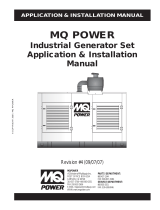
2 — electricalc
®
Pro
AMPACITY WIRE SIZING ....................................................................30
Wire Sizing Based on Insulation Rating ............................................ 31
Re-Sizing Wire Based on Different Insulation Ratings ......................32
Wire Sizing Based on Ambient Temperature ....................................32
Wire Sizing Based on Material Type .................................................34
Sizing Parallel Conductors ................................................................ 35
Finding Derated Wire Size ................................................................36
Sizing Temperature-Adjusted Derated Wires .................................... 36
VOLTAGE DROP ..................................................................................38
Finding Single-Phase Voltage Drop ..................................................38
Finding Three-Phase Voltage Drop ...................................................39
Finding Voltage Drop Wire Size ........................................................40
Finding Voltage Drop Distance .........................................................41
Finding Voltage Drop Resistance ......................................................43
GROUND CONDUCTOR WIRE SIZE ..................................................44
EQUIPMENT GROUNDING COUNDUCTOR WIRE SIZE ...................45
FUSE AND CIRCUIT BREAKER SIZE .................................................45
STARTER SIZE ....................................................................................47
OVERLOAD PROTECTION SIZE ........................................................47
CONDUIT SIZE ....................................................................................48
Finding Motor Branch-Circuit Wire Size and Conduit Size —
Same Wire Type and Size ................................................................49
Finding Conduit Sizes For Multiple Conductors —
Same Wire Type and Size ................................................................50
Finding Number of Wires in Existing Conduit —
Same Size, Various Types ..............................................................51
Finding Conduit Size —
Multiple Conductors, Different Wire Sizes and Types ....................... 52
CONVERTING KILOWATT-HOUR AND BTU .......................................53
PARALLEL RESISTANCE ....................................................................54
APPENDIX A — DEFAULT SETTINGS ............................................. 55
APPENDIX B — PREFERENCE SETTINGS ....................................56
APPENDIX C — 2011 NEC REFERENCES ...................................... 57
APPENDIX D — CARE INSTRUCTIONS ..........................................57
APPENDIX E — ACCURACY/ERRORS,
AUTO SHUT-OFF, BATTERIES, RESET ...........................................58
REPAIR AND RETURN ......................................................................60
WARRANTY .......................................................................................61
(cont’d)




























